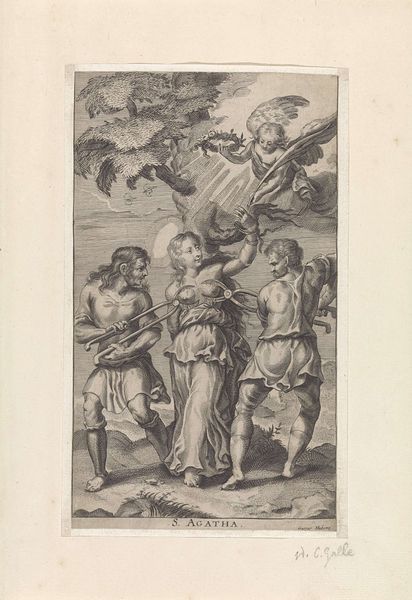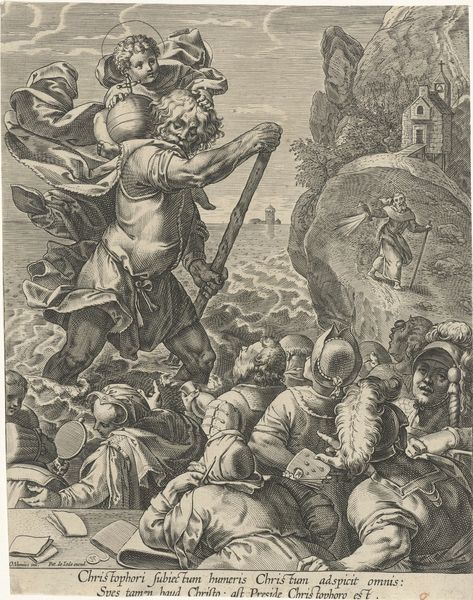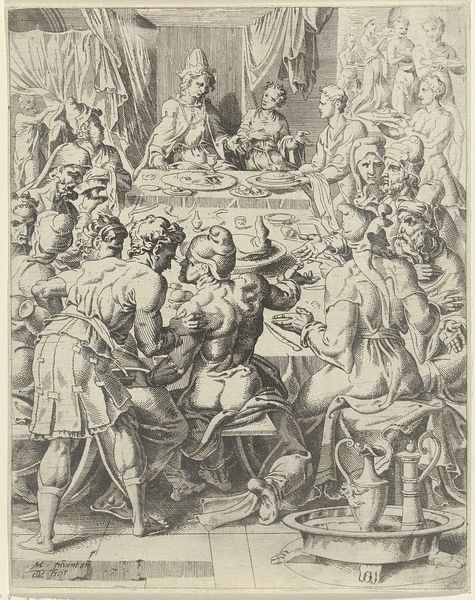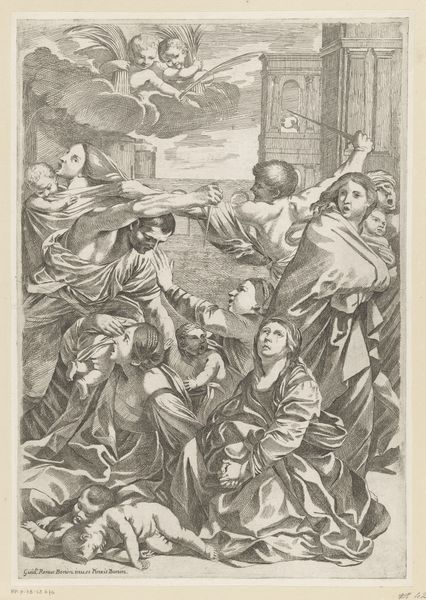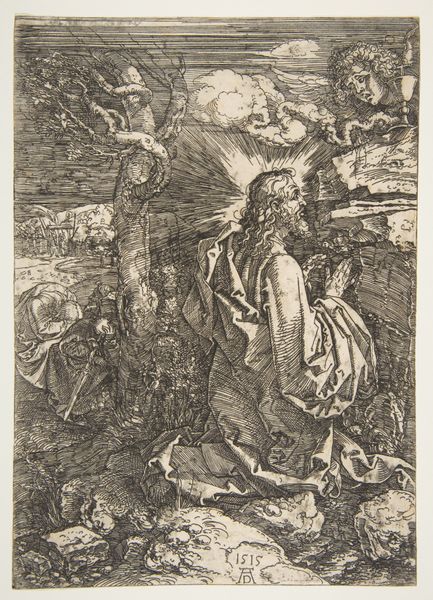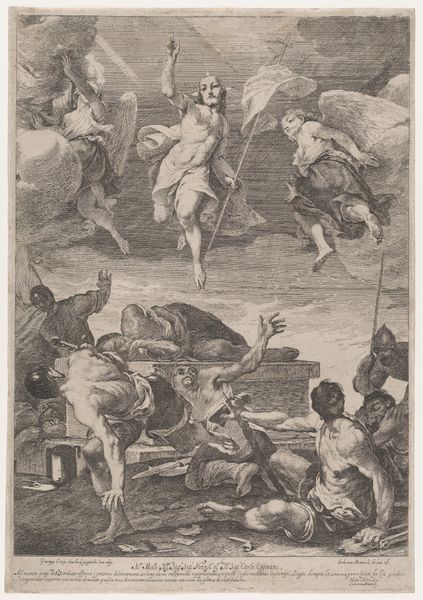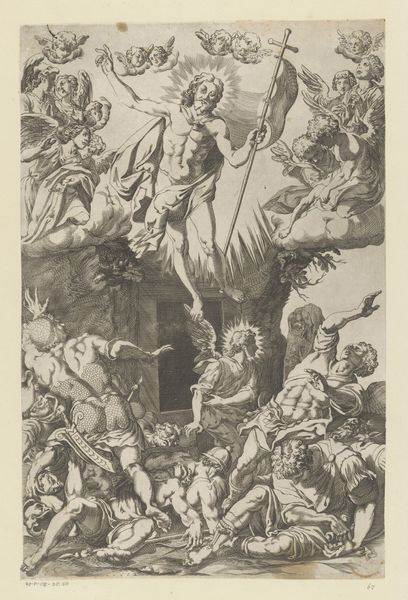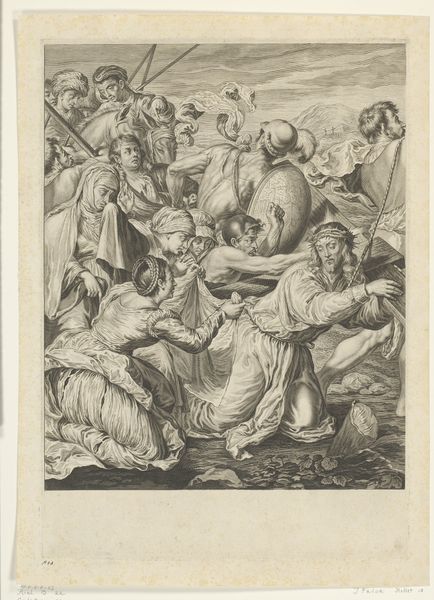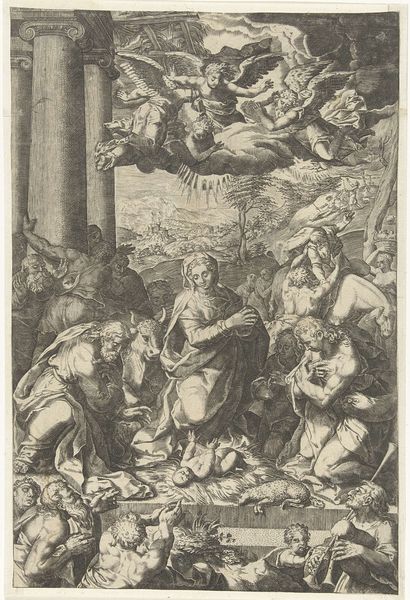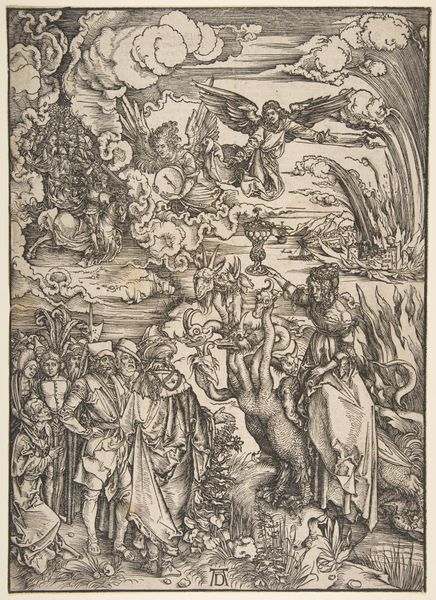
The Virgin at top center in clouds with clasped hands and right foot raised, surrounded by cherubin; below, the twelve apostles stand together gesturing upwards 1517
0:00
0:00
drawing, print, ink
#
portrait
#
pencil drawn
#
drawing
#
high-renaissance
#
ink drawing
# print
#
figuration
#
ink
#
men
#
history-painting
#
italian-renaissance
#
virgin-mary
#
angel
Dimensions: Sheet (Trimmed to plate): 11 1/2 × 7 15/16 in. (29.2 × 20.1 cm)
Copyright: Public Domain
Editor: This is Domenico Campagnola's "The Virgin at top center in clouds with clasped hands and right foot raised, surrounded by cherubin; below, the twelve apostles stand together gesturing upwards," made in 1517, using ink. It looks like a scene filled with religious ecstasy. How do you interpret this work? Curator: This print gives us a glimpse into the complex social fabric of the Renaissance, particularly regarding gender and power. Campagnola positions the Virgin Mary centrally, literally elevating her. But is this a celebration of feminine power or a strategic placement to maintain patriarchal structures? Consider, where does the true authority lie? In the ethereal, divine sphere she occupies, or in the very real, very earthly gathering of male apostles below? Editor: That's a really interesting point. I hadn't thought about it as a negotiation of power dynamics, more just a straightforward depiction of the Assumption. Curator: Exactly. These images are never neutral. Consider the idealized, almost passive depiction of Mary compared to the active, almost agitated poses of the apostles. Does this contrast reinforce existing stereotypes about women and men? How does this imagery serve to dictate acceptable roles within Renaissance society? We must question if the 'divine' actually reflects the terrestrial status quo? Editor: So, you're suggesting the print isn't just illustrating a religious event but also subtly reinforcing societal norms? Curator: Precisely. Campagnola, consciously or unconsciously, participated in a visual dialogue about gender roles and authority. Understanding the historical and social context lets us critically engage with these seemingly straightforward religious images. Editor: That perspective shifts my understanding of the piece entirely. It’s no longer just a scene but an active participant in Renaissance power structures. Curator: Yes. By considering the artwork within the historical and social context, we gain a much richer understanding of not only its visual and artistic properties, but also the underlying power structures it served to legitimize and promote. Editor: Thank you. It makes me want to analyze other Renaissance works, keeping this perspective in mind.
Comments
No comments
Be the first to comment and join the conversation on the ultimate creative platform.
